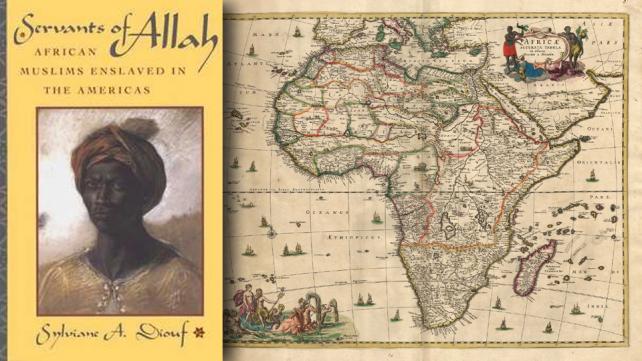
Abbu, the diary of a Muslim enslaved in America is being auctioned in New York. Muslims should purchase that." That's how my son alerted me to the Arabic diary kept by Omar ibn Said in North Carolina. Before we had gathered all of the information, the diary was auctioned off to a collector Derrick J. Beard, by Swann Galleries, New York. This is when my personal journey in search for the Muslim past in the Americas began several years ago.
Omar ibn Said (1770-1864) is one of the most well-known Muslims who was brought to America as a slave. He was brought in 1807 to North Carolina. Although it is said that he converted to Christianity, the myth evaporates fast if you know a bit of Arabic. Just before Omar's death, a North Carolina newspaper published a photo of what it called the "The Lord's Prayer," written in Arabic by him. However, when one reads the Arabic, it is Sura An Nasr (Chapter 110) of the Quran. Considering that it was written 40 years after Omar had been living under slavery, it is good Arabic. I noticed only one significant mistake; he added three words from Surah Al-Saff (Quran 61:13) to it. One must also consider that this was written verbatim when he was about 90 years old, shortly before his death.
About six months ago, I visited the website Amazon.com to purchase Allan D. Austin's book African Muslims in Antebellum America: Transatlantic Stories and Spiritual Struggles. Amazon.com, in the style of the new online book selling culture, suggested that customers of Austin's book had also purchased Servants of Allah: African Muslims Enslaved in the Americas by Sylviane A. Diouf. Intrigued, I bought them both.
Austin's book contains information about the life of about 80 African Muslims enslaved in America between 1730 and 1860. All of these Muslims were educated and left some record of their presence. Austin's book became the first to offer a detailed record of these Muslims that brings to life aspects of American history that are known by few. The book is enhanced by a good collection of photos and manuscripts. Austin is a professor of African-American Studies in Massachusetts.
Diouf goes beyond Austin. While Austin honestly records and brings together the material scattered in museums and manuscripts, Diouf uses this type of information and adds sources from West Africa to build a thorough sociopolitical history of the four century-long struggle against slavery. Using fragments of evidence from slave narratives, diaries of slave traders and the Muslim history of West Africa, Diouf tells a compelling story that puts the Muslim struggle against slavery on the map of scholarship. This is probably the first book that focuses on Muslims' struggle against slavery.
Diouf's study is groundbreaking not only in its theme but also its approach. This meticulously researched book for the first time introduces French scholars reporting from the eastern side of the Atlantic about the socioeconomic picture of those being enslaved. France occupied parts of West Africa as the French joined British slave dealers in occupying Africa. The book takes its audience back and forth between West Africa and the Americas in piecing together a history of African Muslims over four centuries.
Muslims were certainly not at ease with their slavery. They were the early protesters and liberation leaders. The result was that as early as 1503 requests were being sent from Hispanola (Dominican Republic) to Spain to ban the import of Muslim slaves to the New World. However, the demand for slaves was so strong that no one paid attention to the pleas of the Spanish governors to stop the Muslims from coming.
Starting as early as 1522, when Muslims of the Wolof nation in the sugar plantation of admiral Don Diego Colon, son of Christopher Columbus, revolted in Hispaniola, Muslims have been in the forefront of the freedom struggle of slaves throughout the Americas. Some of the significant revolts were as follows: Mexico 1523, Cuba 1529, Panama, Venezuela and Peru in the 16th century, Guatemala 1627, Chile 1647, Florida 1830-1840, Brazil Bahia 1835. Most of these revolts were unsuccessful as far as freedom was concerned. These freedom fighters were ruthlessly crushed, hanged, burned, and even thrown in boiling oil.
The Haiti revolution, however, succeeded. Macandel and Boukmen both were major leaders of that revolution and both were Muslims like most of the other leaders of the slave revolts. Muslims did not just lead Muslims; they were leaders of the struggle for freedom of all slaves. The language of secret communication among the revolutionary leadership was Arabic. Many Arabic documents seized in the Bahia revolution of 1838 in Brazil have been translated. Slaves who escaped established free villages called maroon villages. In many of these maroon villages and in the slave quarters Muslims often developed their system of education and secret Masjids.
Diouf not only painstakingly documents the history of Muslims enslaved in the Americas, but also sheds light on how Muslims became the natural leaders of slaves. Diouf asserts that Muslims in West Africa were highly educated people. Therefore, those brought to the Americas as slaves were also educated and thus provided the necessary prerequisite for leadership. Based on the French documents from West Africa, she tells us that 60% of the Senegalese Muslims in 1880 were literate. She quotes Baron Roger, a governor of Senegal, who said that in 1828 "there are villages in which we find more Negroes who can read and write the Arabic, which for them is a dead and scholarly language, than we would find peasants in our French countryside who can read and write French!"
Unlike others who say that West Africa was predominantly Muslim (McCloud 1995 & Muhammad 1998), Diouf asserts that Muslims in West Africa were a minority during the 16th and 18th centuries. It was through the Muslim struggle against the Transatlantic slave trade that Muslim states and tribes rallied non-Muslims to their cause. Their territory became a haven of safety for not only Muslims but also non-Muslims to safeguard themselves against armed slave dealers. Islam became associated with resistance to foreign rule and protection of the weak. Uthman Dan Fodio is the leading name in this struggle. Although the Muslim struggle in West Africa did not succeed in stopping the slave trade, which was purposefully being fueled by the English and the French through arms and funds to conflicting parties so they could harvest prisoners as slaves, it did, however, result in Islam becoming the dominant religion of West Africa by the 19th century.
Muslims in America like all other slaves faced great difficulties in establishing families and communities. Muslims were subjected to double oppression in cases: one for being a slave and another for being Muslim. In several states it was illegal to even own a paper. However, wherever, it was possible they used their literacy to educate their children in Islam. Diouf does a great job in piecing together the first, detailed account of how a connection with the Quran was maintained by Muslim slaves and how Salat, Saum, and Zakat were established. We learn, for example, that African Muslims were using Arabic grammar written in French to teach Arabic in the secret Muslim schools in Brazil.
Muslims' love for education continued in slavery wherever possible. Gilberto Freyre, the Brazilian scholar is quoted as saying "in the slave sheds of Bahia in 1835 there were perhaps more persons who knew how to read and write than up above, in the Big Houses [of slave owners]". Diouf gives us an encouraging account of how African Muslims preserved their faith and maintained their religious lifestyle in the midst of a hostile environment to the best of their abilities.
What happened to these Muslims when slavery was officially over? Diouf's book does talk a bit about why early Muslims in the Americas disappeared despite their heroic four centuries-long struggle. But, it seems that Diouf decided to leave this topic for another scholar who can provide a similarly through work on the subject. The topic is important not just for historical purposes, but for the community that is living Islam in the Americas today. A Guyanese Muslim leader I met recently in Trinidad wondered aloud why and how Islam disappeared. His question is legitimate, considering that we can draw valuable lessons from our past.
Diouf does report narratives recorded as late as the 1940s about how Islam was practiced by some African-American descendants of slaves in the islands of the North Carolinas. Steven Barboza (1993) also mentions that in 1910 there were some 100,000 African Muslims in Brazil. Diouf asserts that the impact of the Islamic past survives in many things African-American's do today including jazz music.
However, I suggest, the struggling Muslims in slavery are survived by tens of "halfway houses" towards Islam, that is religious movements that were established and flourished during the nineteenth and twentieth century. They began even before the disappearance of Islam in the early twentieth century. Noble Drew Ali's Moorish Science Temple (North Carolina, 1913) and the Nation of Islam (1930) were the two major examples of movements which challenged black Christianity. If the surveys are to be believed, about 45% of the six million Muslims in America are African-Americans today. The movements that declare Islam as their faith deserve the credit for preserving the quest for Islam from the end of the slavery to the current time.
Aminah Beverly McCloud's African American Islam (1995) and Richard Brent Turner's Islam in the African-American Experience (1997) pick up where Diouf's history stops. Both write essentially about this transition period of Islamic history that I am calling halfway houses towards Islam. McCloud writes about how, in the first decades of the twentieth century, African Americans began to actively form communities that defined themselves as Islamic. McCloud writes about more than ten communities that define themselves as Muslims in the first thirty years of the twentieth century.
In the 1960s Muslims, particularly those from the Nation of Islam, had a tremendous impact on the consciousness of Black movements. The Muslim heavyweight boxing champion, Muhammad Ali, ignited pride and dignity not just within the Black community but also among Muslims and people of honor everywhere. Later in the twentieth century many individuals like Malik Shahbaz (Malcolm X) joined real Islam leaving the halfway houses behind them.
But the most significant change came when Imam Warith Deen Mohammed led and helped hundreds and thousands of his father Elijah Muhammad's followers make a transition to real Islam in 1975. This was the single largest acceptance of Islam in modern history and a tribute to the millions who struggled to preserve Islam through four centuries of slavery.
Focus on the legacy of the four century-long resistance against slavery does not, however, provide satisfactory answers for those struggling to preserve their Islamic identity in the twenty-first century in the Western Hemisphere. Did they disappear because of the efforts of the Christian abolitionists' missionary efforts? Was it because of the dominant Christian culture? Or was it due to continued oppression by the white majority that made it impossible for Muslims to survive? Was it the absence of education with hardly any contact with the world of Islam and forced conversions that lead to the gradual disappearance of Islam? Maybe it was a combination of all of these factors which will require a fresh look on the subject by the next Diouf.
Suppression of Islam and oppression of Muslims cannot be ruled out as a major factor. Answers will also require a thorough study of the last major rebellions in Florida, USA and Bahia, Brazil in the 1830s. What happened to those freedom fighters when their revolution failed? It may uncover the types of massacres that resulted in the ethnic cleansing of the indigenous nations of Americas.
Forced mass conversion of slaves was a norm in the Americas not an exception. Therefore, we are not wondering about the disappearance of all, we are only asking about what happened to those African Muslims who fought slavery, resisted conversions, freed themselves and whose heroic struggle to keep Islam alive is documented by Diouf. Could the culprit be freedom itself? Could it be freedom which finally diluted the spirit of resistance and survival which built the Muslim communities and maroon colonies? Did they gradually assimilate and lose when slavery was officially abolished?
The challenges of the West are coercing "free" Muslims in America today to lose their Islam as well. It is not easy to be a Muslim in America. It is not just socioeconomic pressures, stereotyping, discrimination, and a $4 trillion dollar per annum strong Christianity, but also the media tools of this civilization which bring Haram choices to your living room. The challenges of freedom must be met by making the choice of good at least as charming and presentable as the choices of evil.
Although a popular phrase repeated in the American media sates that Islam is the fastest growing religion in America, the fact is that not more than four percent Muslims in America attend Masjids on Fridays as compared to more than 40% Christians who attend church at least once a week. A good number of immigrant Muslims hug the American dream so steadfastly that they wake up to Islam only when it's too late for their children. Less than one percent of children attend any kind of Muslim schooling whereas 80 percent of Jewish children attend some form of Jewish education in America. A recent study found that more than 60% of people who accept Islam in the state of New York leave it within a few years (Ilyas Ba-Yunus 2001). Some say the historical movement towards Islam among African-Americans, which started at the heel of civil right movement of the sixties and seventies, has substantially slowed down. According to Imam Khalid Griggs, most of the top writers in the African-American press today are anti-Islam, unlike in the sixties and the seventies. American foreign policy and the conflict with Sudan is helping the Christian crusade under the flag of anti slavery movement in Africa, which explicitly blames the "Arab of Sudan" for keeping the slavery alive in the "African South". Hollywood has been also very thoughtful in picking its terrorism fighters who are now depicted as Blacks fighting Arab Terrorists to save America.
There is a great curiosity among American Muslims about their history in America. It has given birth to a whole genre, which includes books and essays asserting Islam's presence in America as early as the thirteenth century. Steven Barboza's American Jihad (1993), Richard Wormser's American Islam (1994), N. Brent Kennedy's The Melungeons (1997), Richard Brent Turner's Islam in the African-American Experience (1997), Abdullah Hakim Quick's Deeper Roots (1996), and Amir Muhammad's Muslims in America (1998) are just a few of these books. Several monographs by Al-Ahari must be mentioned here which provided an early insight into this subject.
This history may be the reason that the younger generation of immigrant Muslims in America is more attracted towards African-American Muslim leaders whose rhetoric for social justice resonates the centuries-long struggle against slavery and oppression. Four of the five most popular speakers of Islam in America today are Africans.
It seems that writers of the last decade of the twentieth century have finally picked up where Alex Haley's book Roots and C. Eric Lincoln's book the Black Muslims in America left off. Haley placed Muslims at the heart of Africans enslaved in America. His was a novel with imagination and insight about a people who were his ancestors. Diouf's work, however, is the first through account of that historical struggle against slavery that began in the early 16th century on both sides of Atlantic and continued until the late nineteenth century. Diouf provides a detailed examination of an area of Black History that was pretty much ignored.
I hope this work will fuel further research–it certainly inspired me to study further. After reading in Diouf's book that a first surviving copy of the Quran from the slave era was recently discovered in Trinidad, I started contacting Muslims, journalists and historians in Trinidad. While I was unable to trace who has that copy of the Quran, it led me to visit a historical site in a dense rain forest of Trinidad where free Muslim slaves had established a maroon colony long before slavery was officially abolished. The site still needs full excavation. However, the Hindu-led government of Trinidad is showing hardly any interest in the heritage of African Muslims.
One of the significant notes to this study of the literature on African-American Islam is how Qadianis find a good position and reference. Their mission in America is about 80 years old and active essentially among African-Americans. Turner and McCloud devote a good portion of their discussion to them, while many other American authors including John Esposito routinely refer to their sources as well. It seems that the Qadianis' mission with the African-American community is regarded with respect while these scholars are either unaware of their not being Muslims or this fact has been relegated to being some Pakistani preoccupation. In a recent conference of the Nation of Islam in Chicago, it was noticed that the most dominant translation of the Quran was that of Muhammad Ali, a Qadiani of Lahori branch.
I thank God for Diouf and I pray for more scholars like her, not just for the extraordinary quality of groundbreaking research but for its timing also. Hardly a few months pass by when someone does not blame Islam for the continued slavery in Africa. While Islam got some blame for the African custom of female circumcision, not much independent study is coming out regarding the social conditions which are being described as slavery. I wonder when Christian missionaries and American foreign policy will discover untouchability in India, which is the most persistent form of slavery still being practiced upon 200 million people in India.
The American Library Association has given Diouf's book the Outstanding Academic Title Of The Year award (Choice 1999) which this reviewer also had the honor of receiving (Choice 1991) for the book Conversion to Islam: Untouchables' Strategy for Protest in India. Despite being an Academic book, Diouf's work is easily accessible. I recommended it for anyone who cherishes freedom and justice for all.
Sylviane A. Diouf, Servants of Allah: African Muslims Enslaved in the Americas, New York, New York University Press, Washington Square, New York, NY 10003, USA, 1998, pp. 254

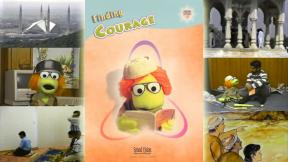
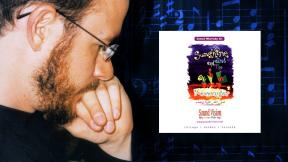
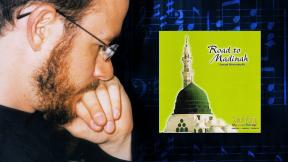
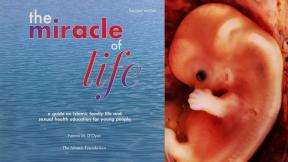



Comments
Muslims and slavery
great article, thank you
good work! I'm only just
good work! I'm only just starting to research this subject, and I hope to find a lot more
Location
great reading,
Location
May allah bless all the brother and sister whose mission is to explain and write the historical importance of our Islamic history.
Location
Super reading! May knowledge of this sort bring back Muslim pride to blacks in the Americas. May Allah grant paradise to all those who suffered at the hands of these European colonisers, who still operate in neo-forms against Muslims across the world.
Location
Excellent article. Readers may also be interested in reading "Denmark Vesey" by David Robertson, 1999. A story of an American Slave who gained his freedom then led a slave conspiracy in Charleston, SC in 1822 to try to free his brothers. Mr. Robertson presents circumstantial evidence of Vessey's possible relation with Islam.
Location
Add new comment